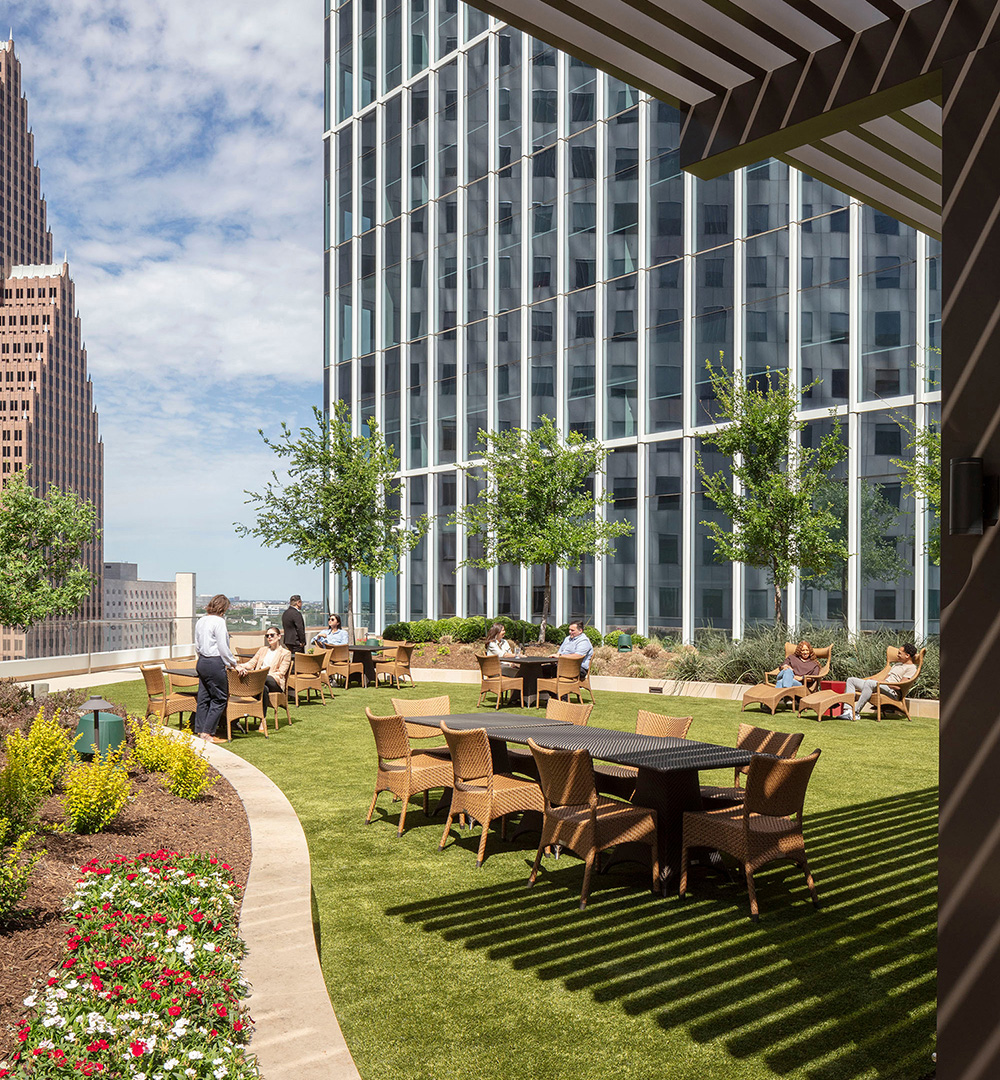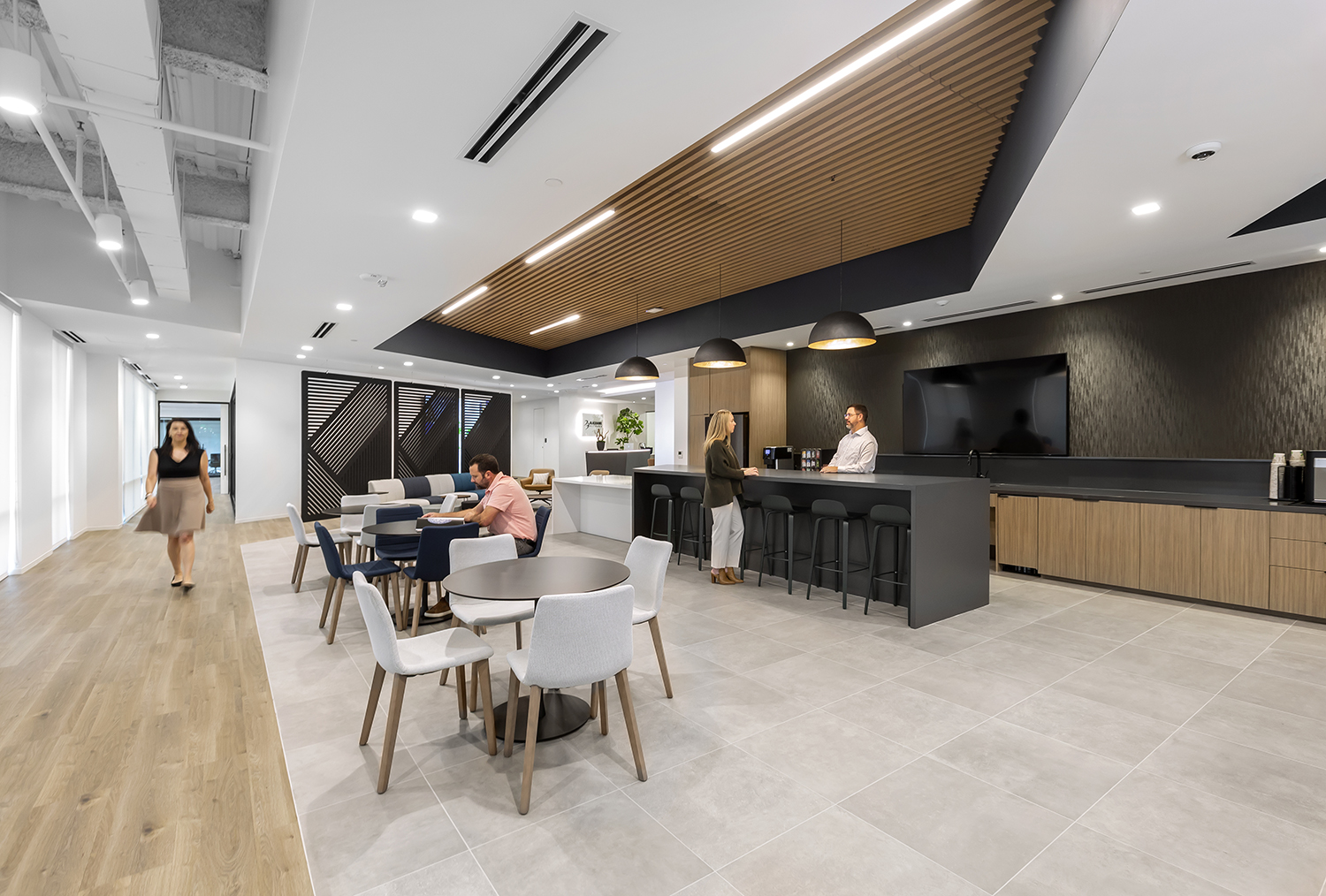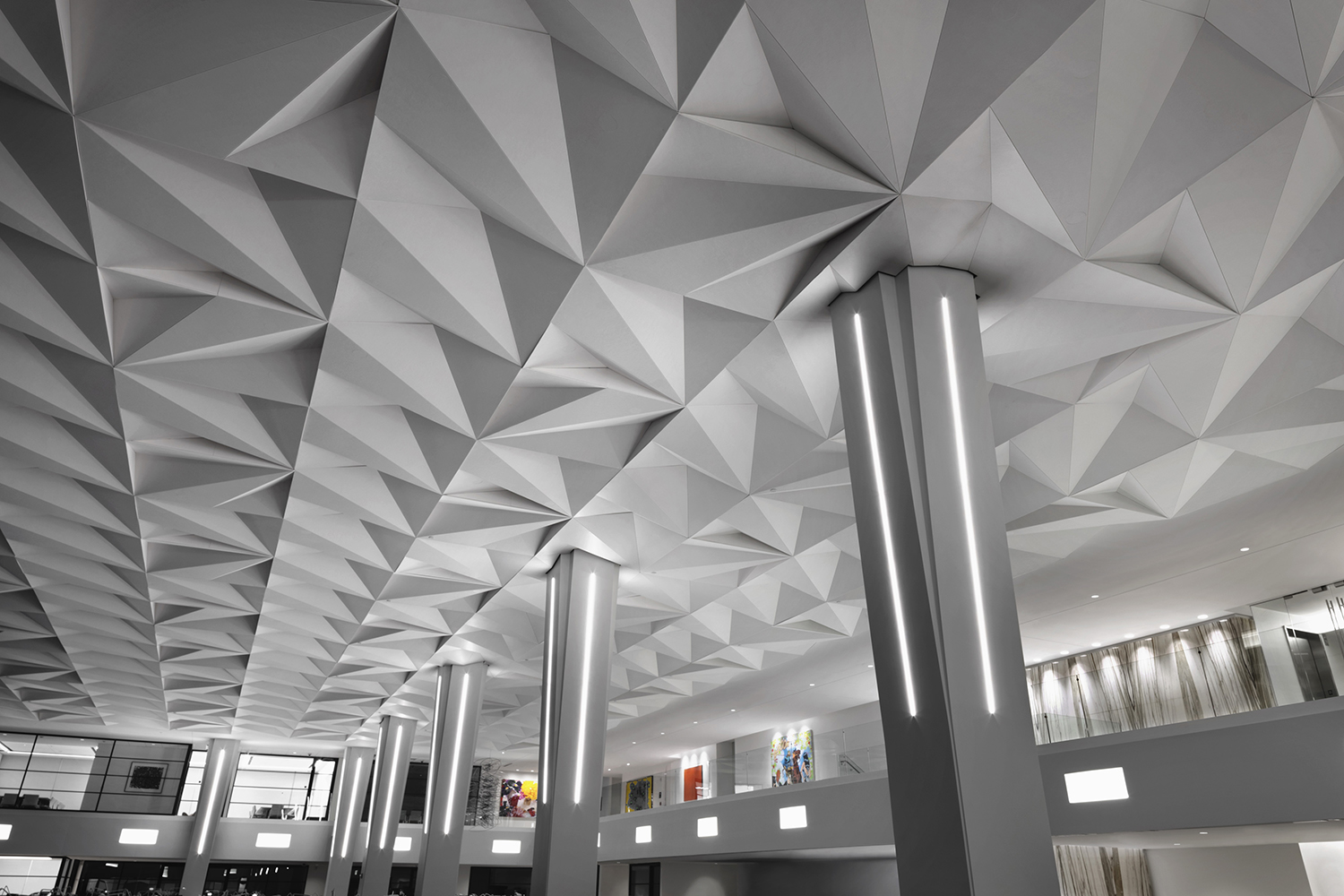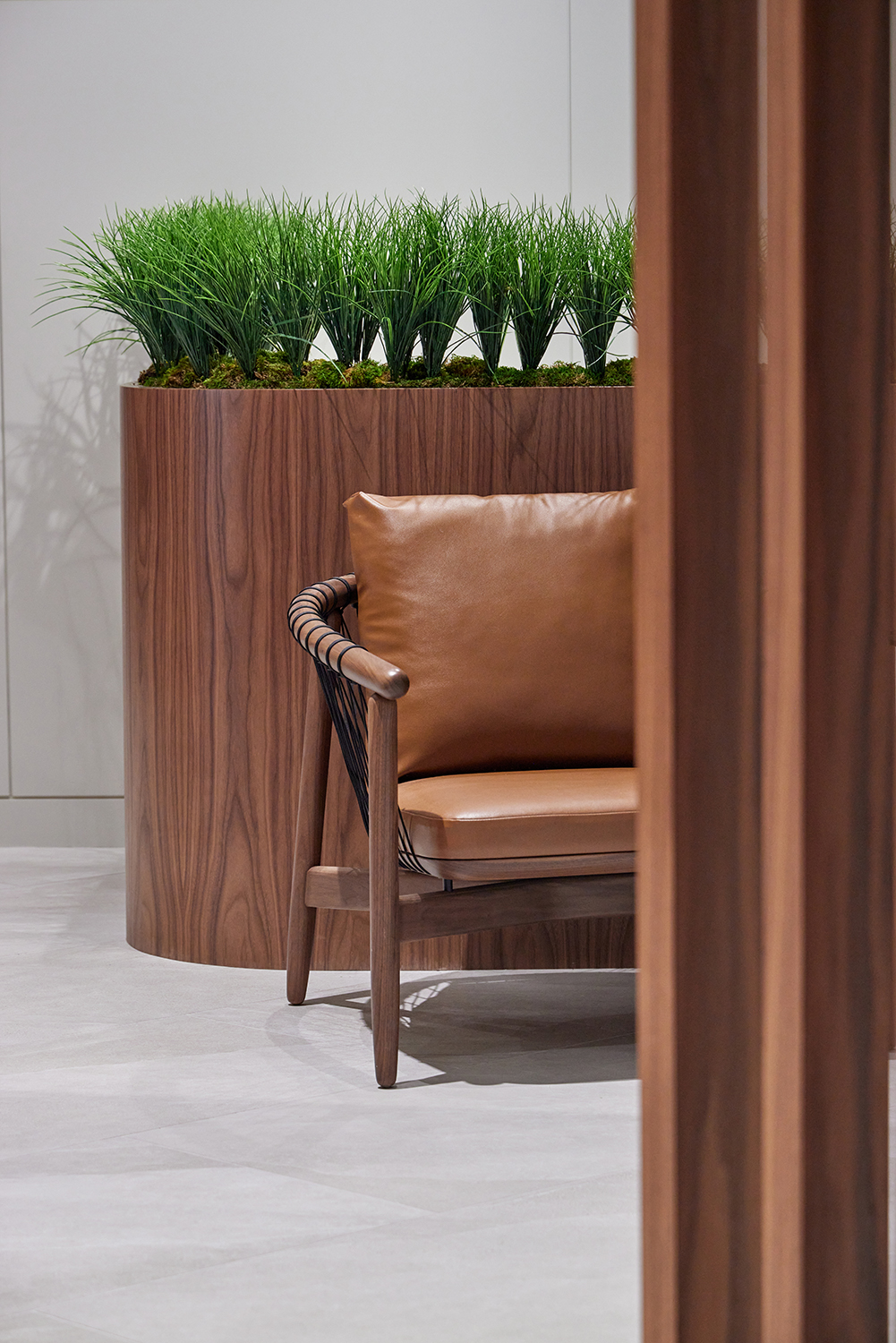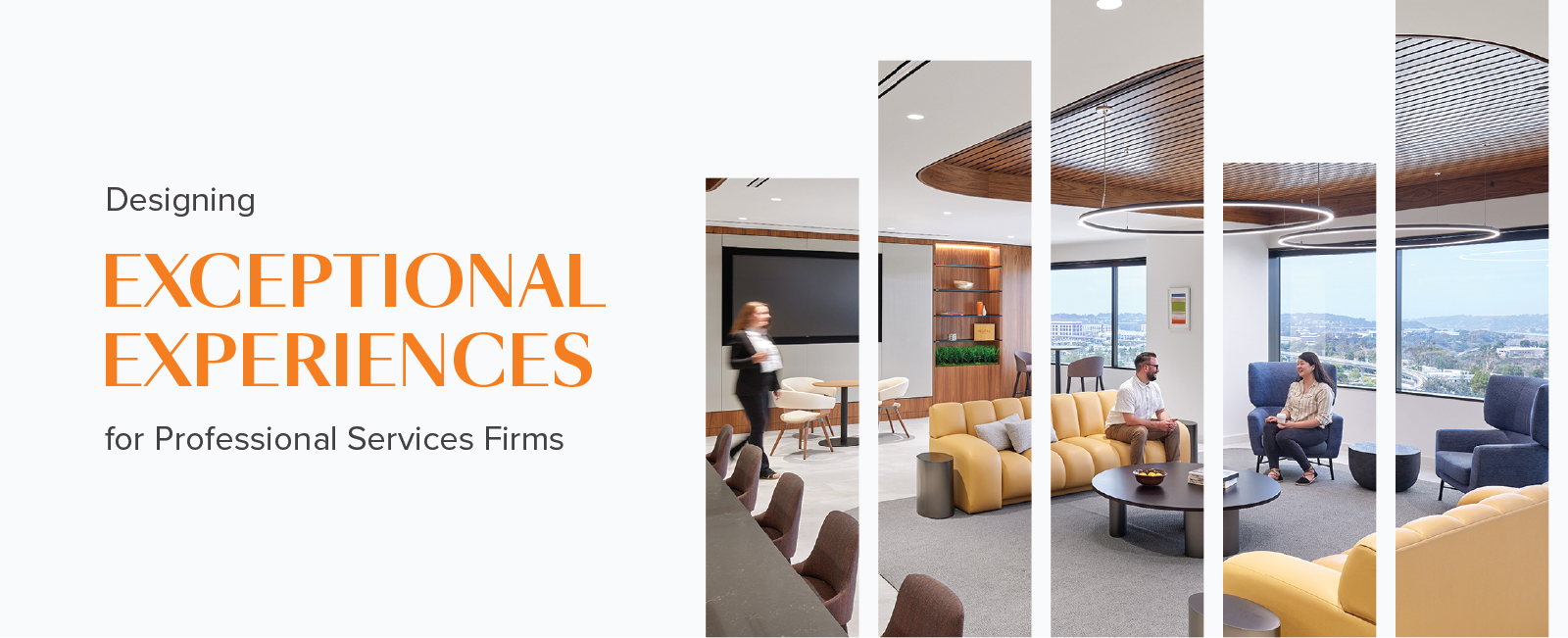
OUR VOICE

Home › Our Voice › Articles › Designing Exceptional Experiences for Professional Services Firms
Taking the first step towards a new future for your organization can be a daunting effort – but for professional services organizations, the
time is now. Principals Amy Collins and Marc
Bellamy
recently shared their thoughts on this subject with Fast
Company.
Taking the first step towards a new future for your organization can be a daunting effort – but for professional services organizations, the
time is now. With 70%
of organizations
expected to prioritize in-office initiatives, the corporate real estate landscape is primed for potential. Leaders must fully capitalize on
the seismic shifts in the new standard of in-office work and use their spaces to enhance collaboration, productivity and company purpose.
Let us explore the legal industry’s transition back to in-office work, which requires a delicate balance of privacy and common spaces.
Though these two needs might seem opposed to one another, a Convergent approach
along with a clear Experience Strategy will
accelerate a legal firm’s ability to attract and retain talent by exceeding the demands of today’s workforce.
Keep reading to discover the most impactful experience drivers helping leaders achieve their office goals.
ORGANIC INTERACTION OPPORTUNITIES
The most transformative ideas often emerge far beyond the confines of a boardroom or the monotony of a desk. Instead, sparks of ingenuity often stem from shared moments with colleagues, like a quick chat in the hallway or a coffee break.
Often, these moments happen in interstitial spaces that tend to be afterthoughts. When utilized well, however, an interstitial space can be
every bit as impactful as a breakroom or lounge. Orrick’s two-floor office
space is a perfect example. Thanks to an open design and interconnected staircase, team members can communicate quickly and easily
with colleagues from other floors.
As in-office work models continue to shift and evolve, leaders must prioritize the creation of dynamic spaces that foster these organic
connections. Otherwise, businesses risk missing out on valuable interactions like knowledge sharing, mentorship, and peer-to-peer
professional development. Organizations have plenty of options regardless of office footprint and team size.
For instance, our LNG Energy client wanted to maximize
their office’s potential and facilitate face-to-face interactions. We worked with them to create specific areas, such as green spaces and
cafes, where team members could gather away from their desks. Best of all, the design provided these amenities while simultaneously
cutting down on the required footprint, ultimately saving the organization money.
Providing these spaces can solve for challenges like a lack of mentoring or knowledge sharing, while boosting people’s connection to an
organization’s purpose – two primary imperatives valued by new generations of leadership.
That is what people miss when working from home, the organic interaction, the spontaneous learning. It is all the things that can't be planned that truly build community and culture.
- Marc Bellamy, Principal of Design + Architecture

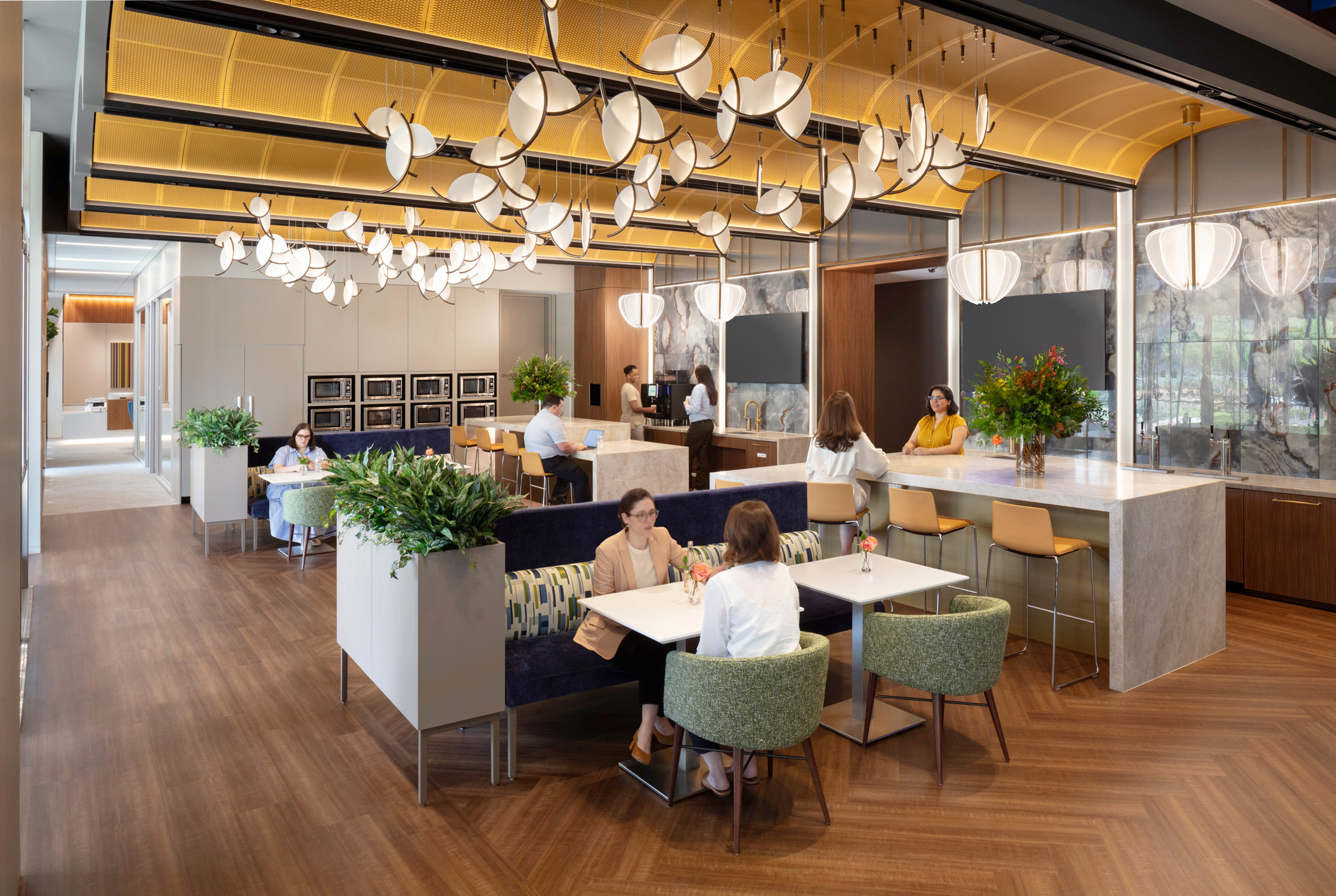
COMPETITIVE ADVANTAGES FOR EMPLOYEE WELNESS
In today’s competitive job market, top talent has abundant options. This means transforming the office into a powerful amenity that offers unique value—one that attracts, engages, and retains the best employees.
As noted in Wellhub’s 2025 State of
Work-Life Wellness report,
88% of employees say that wellness-focused workspaces are crucial to their overall job satisfaction. In fact, firms with
WELL-certified offices see higher levels of employee engagement, productivity, and retention.
Looking to hospitality design is a strong way leaders can begin to rethink their approach to the workplace. A health-centric mindset is
especially valuable for the legal profession, where long hours, intense focus, and strong mental and emotional resilience are essential. The
industry's demands can contribute to stress and burnout, resulting in a high turnover rate.
Design elements such as access to daylight or biophilic design have a proven
effect
on employee productivity and mood, minimizing stress while improving performance. A firm’s leaders must leverage these insights to create
spaces that elevate the work experience and provide an undeniable draw to attract new talent and sustain the energy and motivation of
those who already drive the firm’s success.
A successful organization means having happy, healthy people, being productive and loving where they work. A great workplace design removes unintended barriers that keep people from being and feeling their best.
- Amy Collins, Principal of Design + Architecture

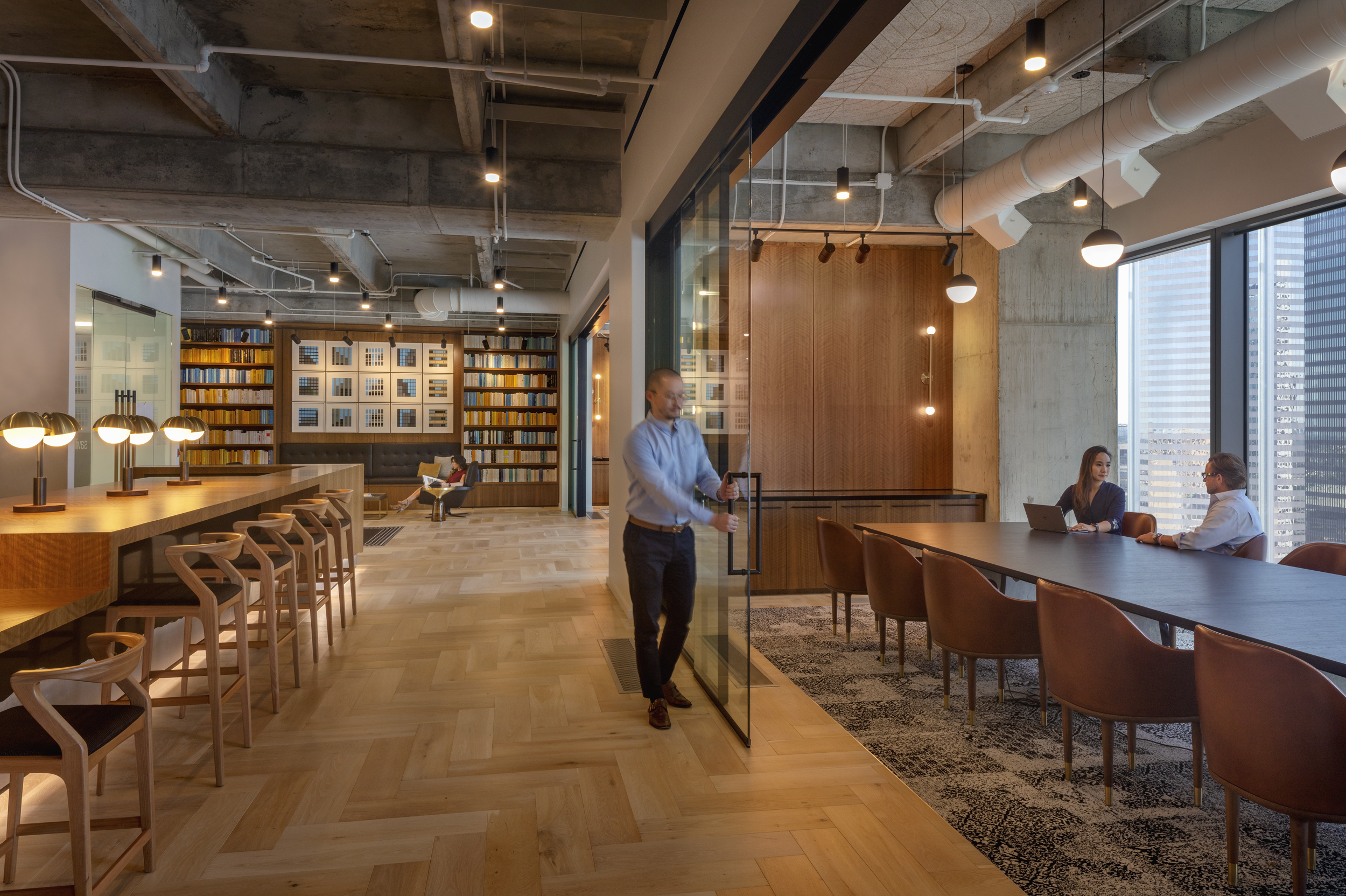
SPACE UTILIZATION
Providing a functional workspace is not enough – it must reflect a company’s purpose while making every square foot count. Real estate costs are significant. The leases are long and could mean millions of dollars wasted on inefficient space.
A Visioning process, like the one we used with Vitol,
unlocks a space’s full potential by exploring all possibilities and optimizing efficiencies.
For Vitol, whose entire team worked on a single, open trade floor, we designed the second floor as a dedicated quiet area. This space is
exclusive to reserved meeting rooms, breakout spaces, and alcoves, offering employees a clear break between the chaos and high energy floor
and a comfortable retreat when quieter moments are needed.
Vitol’s successful new workspace was the result of our examination of unique culture and workstyles. Every organization and industry is
different, and a one-size-fits-all approach doesn’t work. Effective design starts with understanding how and where people are most
productive, creative, and happy in their work. This is where Visioning creates success.
One industry-specific example is that many law firms are choosing to remove or repurpose their law libraries, as information gathering has
shifted to a cloud environment. Replacing these spaces with meeting or common areas would allow these firms to increase opportunities
for knowledge sharing and mentorship, while eliminating inefficient single-purpose spaces.
Our Visioning process allows a firm to examine its spatial requirements and possibilities, moving forward with data-backed solutions
that will benefit their people and ultimately improve their business’ effectiveness.
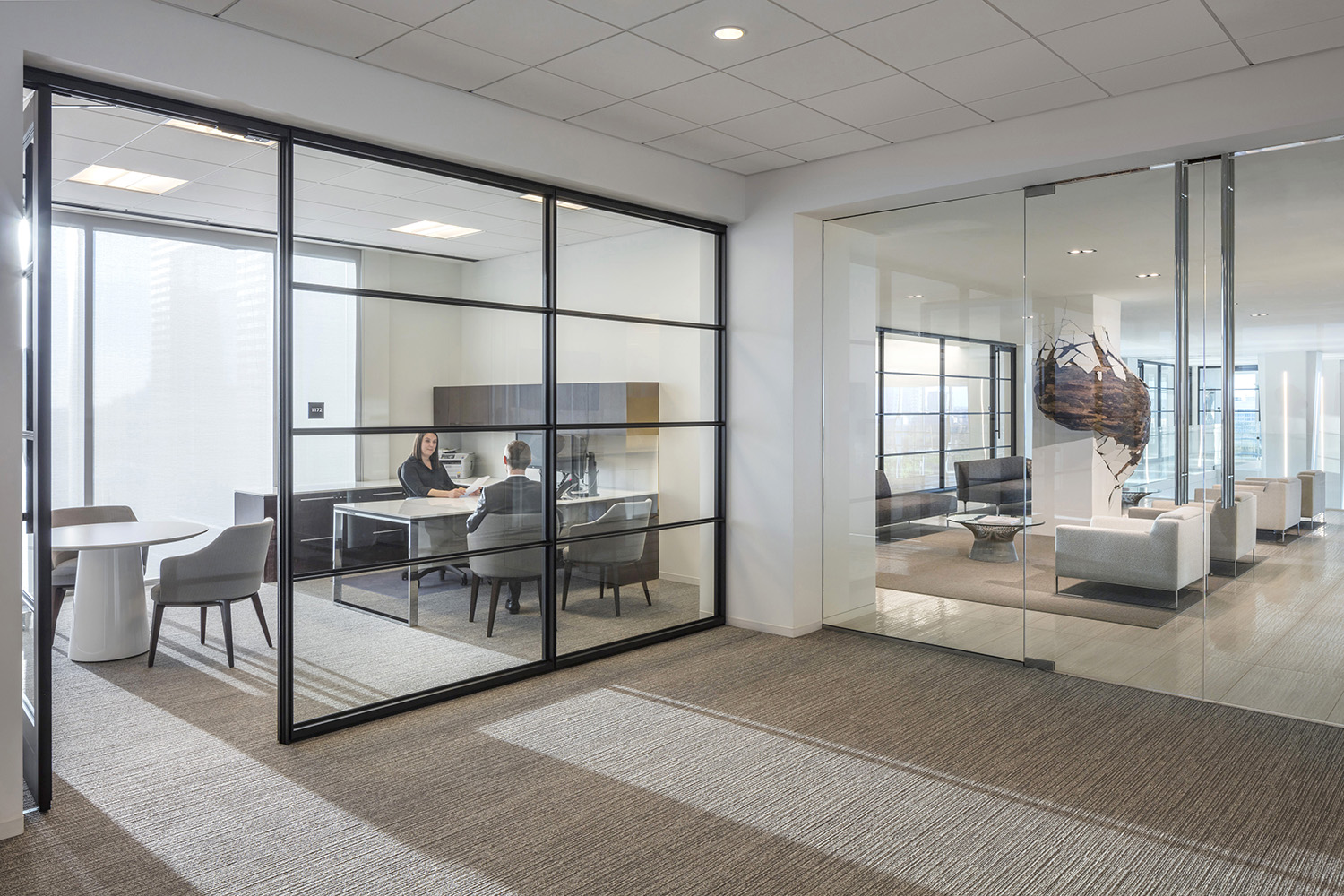
FUTURE-FOCUS AND FLEXIBILITY
The most impactful workplaces are agile and adaptable, ready to support an organization’s mission today, tomorrow, and for years to come. But in a time where leaders must navigate the waters of accommodating multiple needs and preferences from several generations, something easier said than done as our Global Corporate Law Office client discovered.
Like with the Vitol project, it was critical that every square foot for this Law Office was used with intention and provided a
competitive advantage. However, the Law Office client had the added challenge of fusing two teams and bringing them under the same roof.
Through modular planning, we were able to help them create a blend of personalized and collaborative work areas well-suited for the firm’s
new hybrid work style.
One of our projects with DLA Piper involved a similar challenge, as their team needed to balance internal meetings with client interactions
in a limited space. To address this, the DLA Piper San Diego team’s conference rooms were designed with adjustable walls, allowing them to
expand the space for client meetings while maintaining privacy when needed.
The success of these projects hinged on flexibility, which will continue to grow in importance in the coming years. By accounting for these
continued shifts, businesses may position themselves to attract and retain top talent, contributing to their growing competitive advantage.
I encourage our clients to create flexible variety - an ecosystem of flexible spaces to support a variety of needs, preferences, and future change within the workplace container.
- Amy Collins, Principal of Design + Architecture


IT'S TIME TO PRIORITIZE EXCEPTIONAL EXPERIENCES
As leaders look to the many opportunities ahead, it’s important to remember that people’s needs, workstyles, and preferences in the workplace will continue to evolve. Ongoing discussions and a future-focused approach can ensure an organization’s environment provides competitive advantages that match their people’s desires.
Simply put, if organizations do not provide people with the types of experiences they crave, they risk missing out on the best and brightest
talent or investing capital in a physical workplace that fails to draw employees into their space. Yet with ample real estate
opportunities, this is the perfect time to rethink workplace design.


